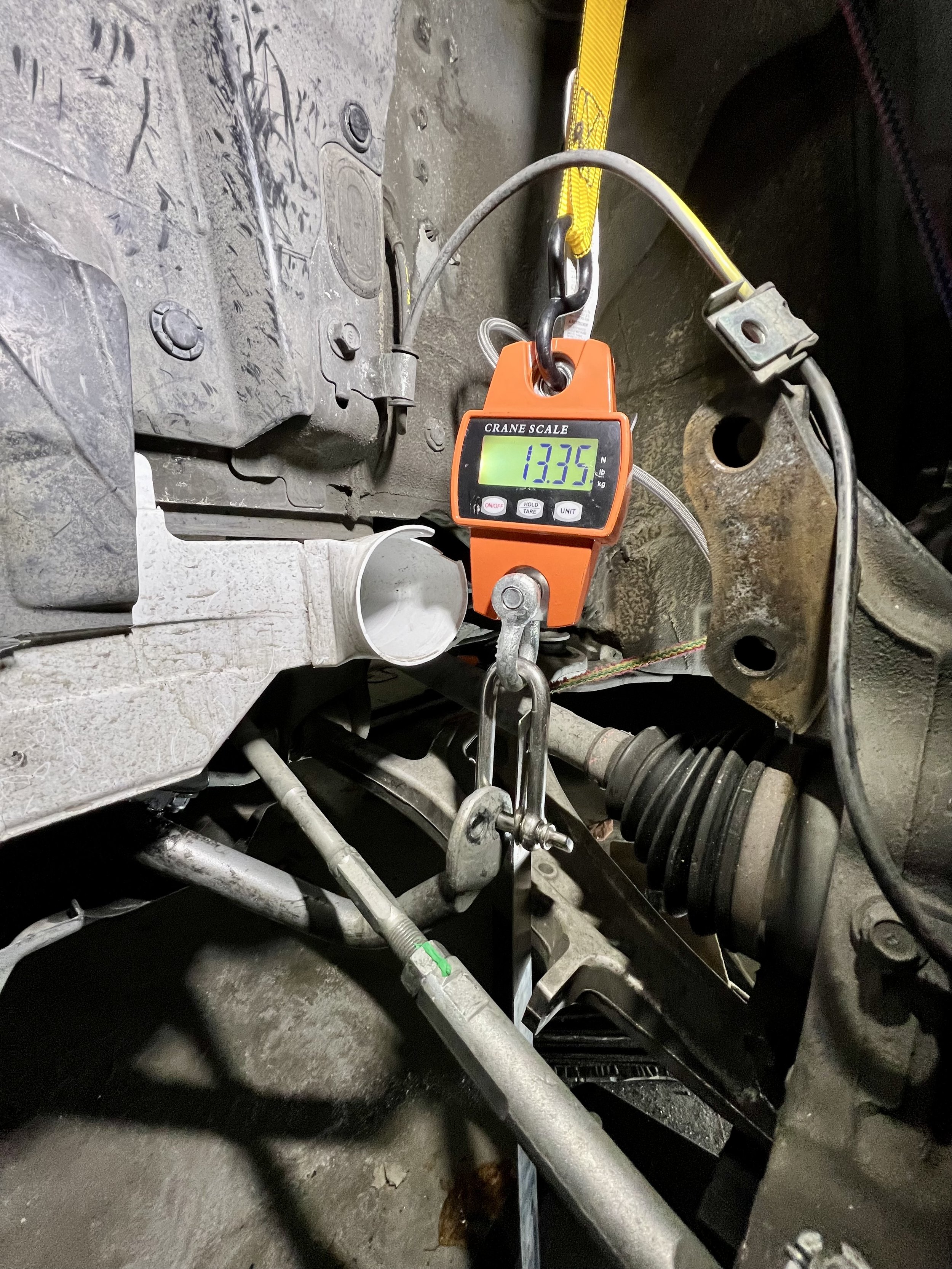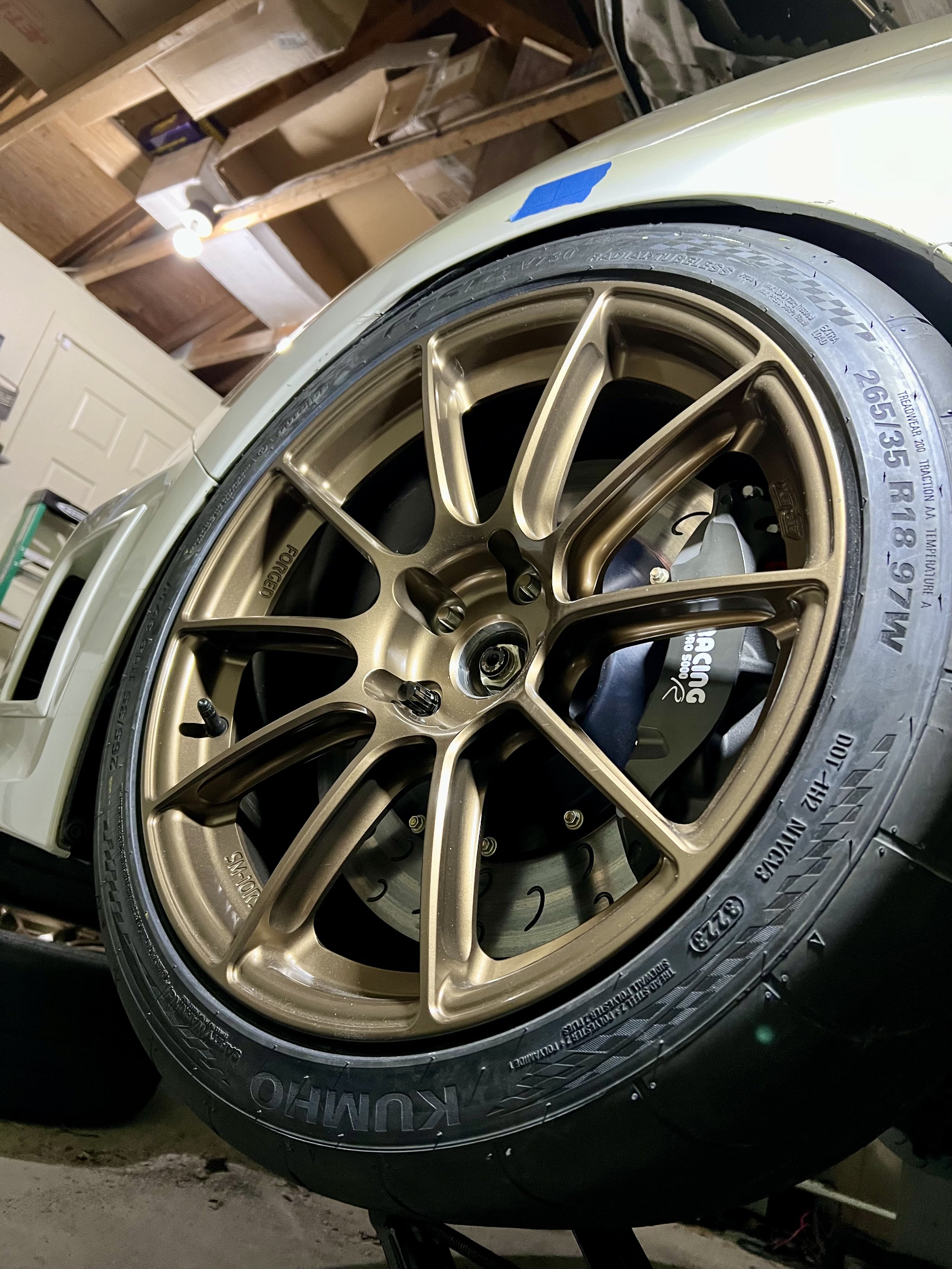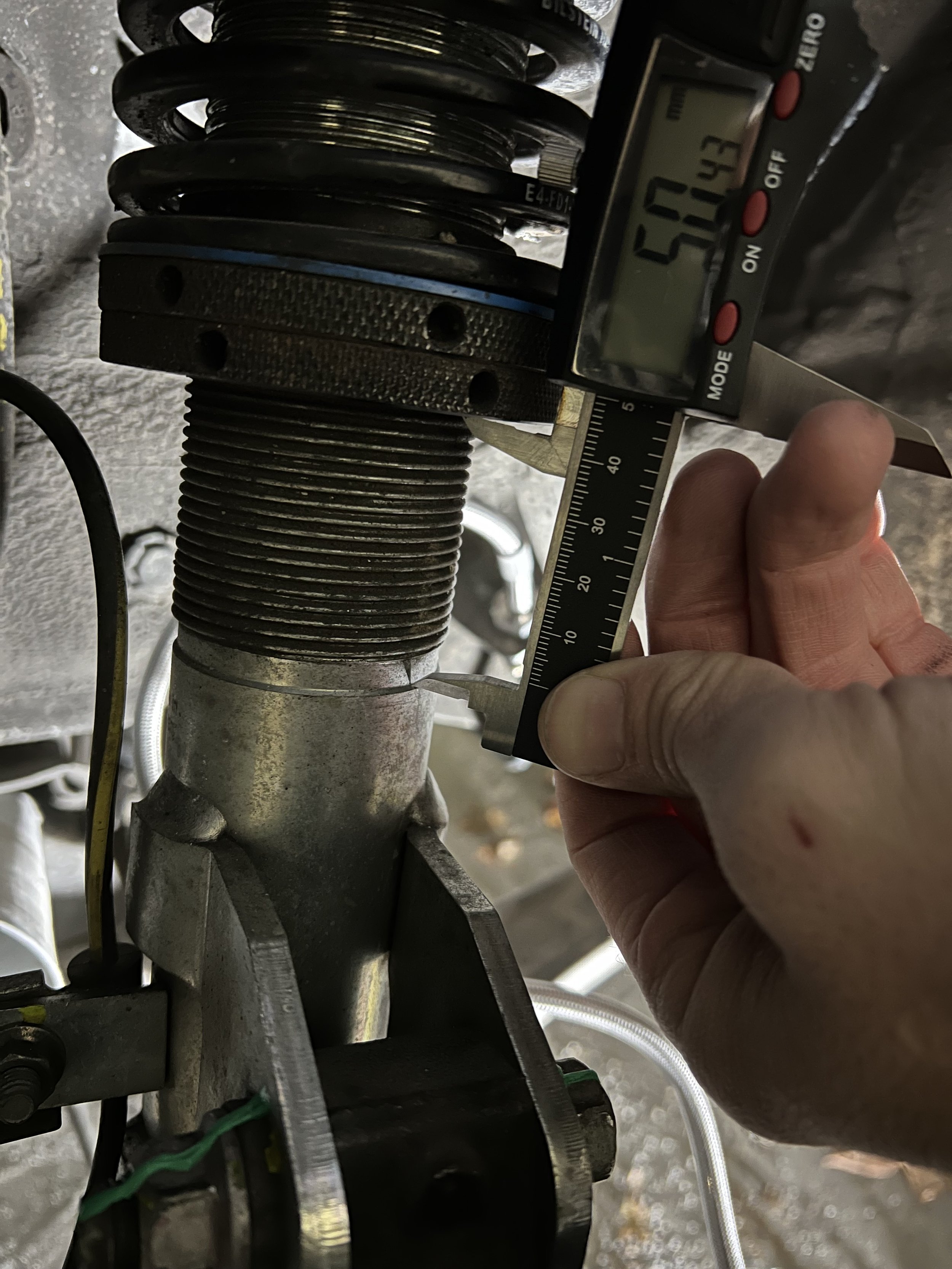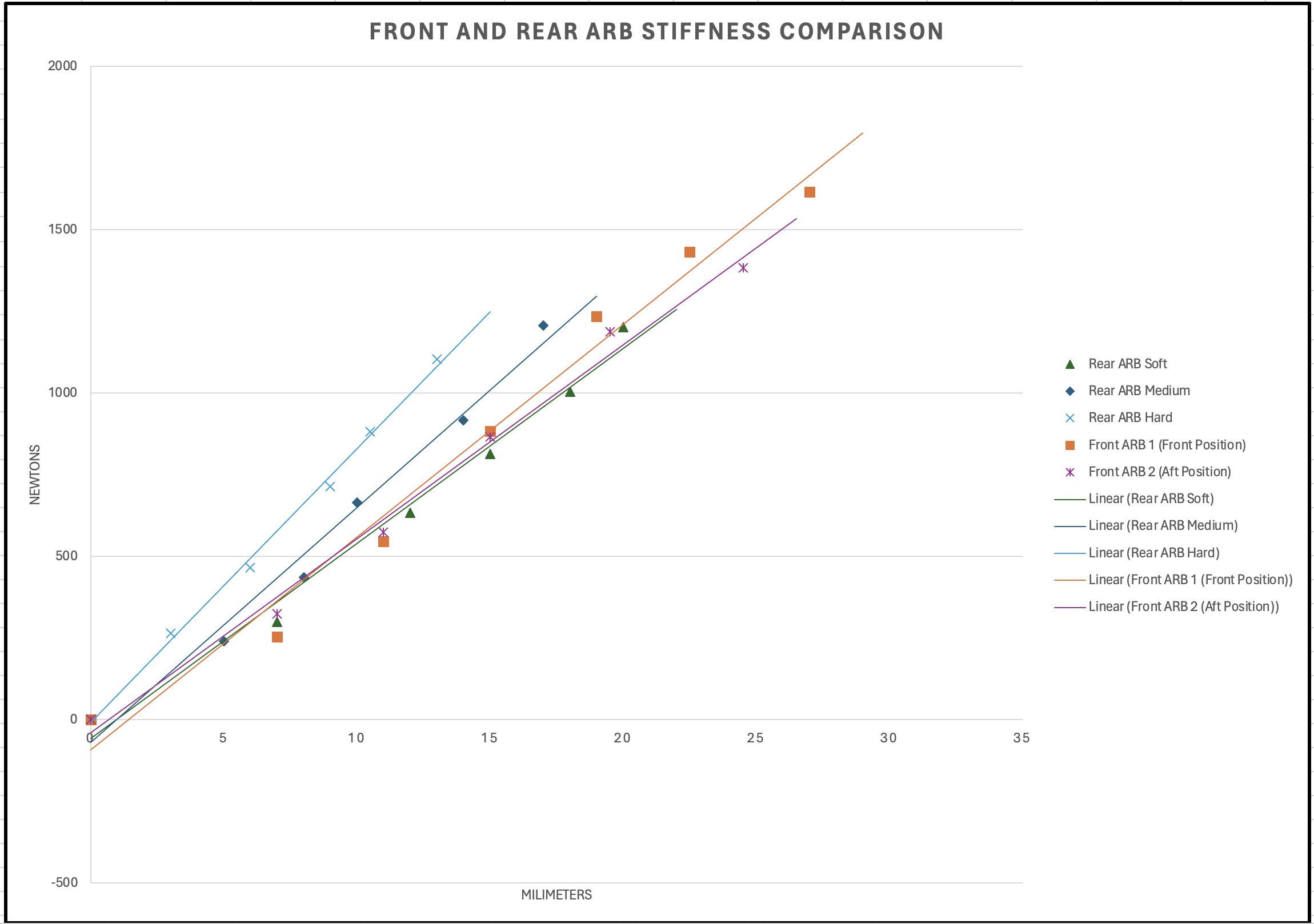I spent two weeks of free time measuring the suspension motion ratios and anti-roll bar stiffness both front and rear. This will enable me to calculate Lateral Load Transfer Distribution (LLTD). Therefore, I can get useful information on how new suspension components or settings will affect the steady state handling of the car without having to change anything physically. This will enable me to focus on small fine-tuning adjustments at the track instead of going through the trial and error of major changes.
Measurements were done multiple times to verify the accuracy
The measurements were done with tape measures, a digital caliper, and a hanging scale. These tools have their limits, but all results were measured at least twice to confirm accuracy to the best of my ability.
I did not measure the Rear Soft Anti Roll Bar motion ratio early on due to a fitment issue. I was able to resolve the problem of measuring the soft setting stiffness but did not revisit the motion ratio. As you can see, the medium and hard rear anti-sway bar motion ratios are very similar. A linear extrapolation for the soft setting is close enough for my intended purposes.
These measurements were taken on a 2011 Subaru WRX STi with a 24 mm front Whiteline anti-roll bar and a 22 mm rear Whiteline anti-roll bar
The most notable finding during the suspension measurements is that the two holes on my 24mm front sway bar are effectively the same stiffness. The front may be marginally stiffer at large deflections.
The rear anti-roll bar stiffness setting demonstrated expected levels of increased rigidity between settings.
The most interesting finding was graphing the front and rear ARBs together. The front 24mm bar is similar in stiffness to the rear 22mm soft setting. This is most likely because of the extra bends that have to be made in the front ARB to fit the front sub frame. This is likely true on most vehicles because it is easier to package a rear sway bar that fits the ideal u shape for rigidity. The more the bars have to be bent to fit around steering components in the front, the more their stiffness is reduced.
Above is the motion ratio for the front and rear. The average is a simplification. Keep in mind that in reality, as can be seen in the data, the motion ratio changes somewhat as the wheel moves through its arc of travel. However, for my intentions of calculating basic LLTD, the average will work just fine. Also, you will find the same motion ratios for the front and rear anti-roll bars. Keep in mind the ARB motion ratios are only valid for a front 24mm Whiteline bar and a 22mm rear Whiteline bar for a GR STi. They are probably close enough for similar products by other manufacturers for the GR STi.








